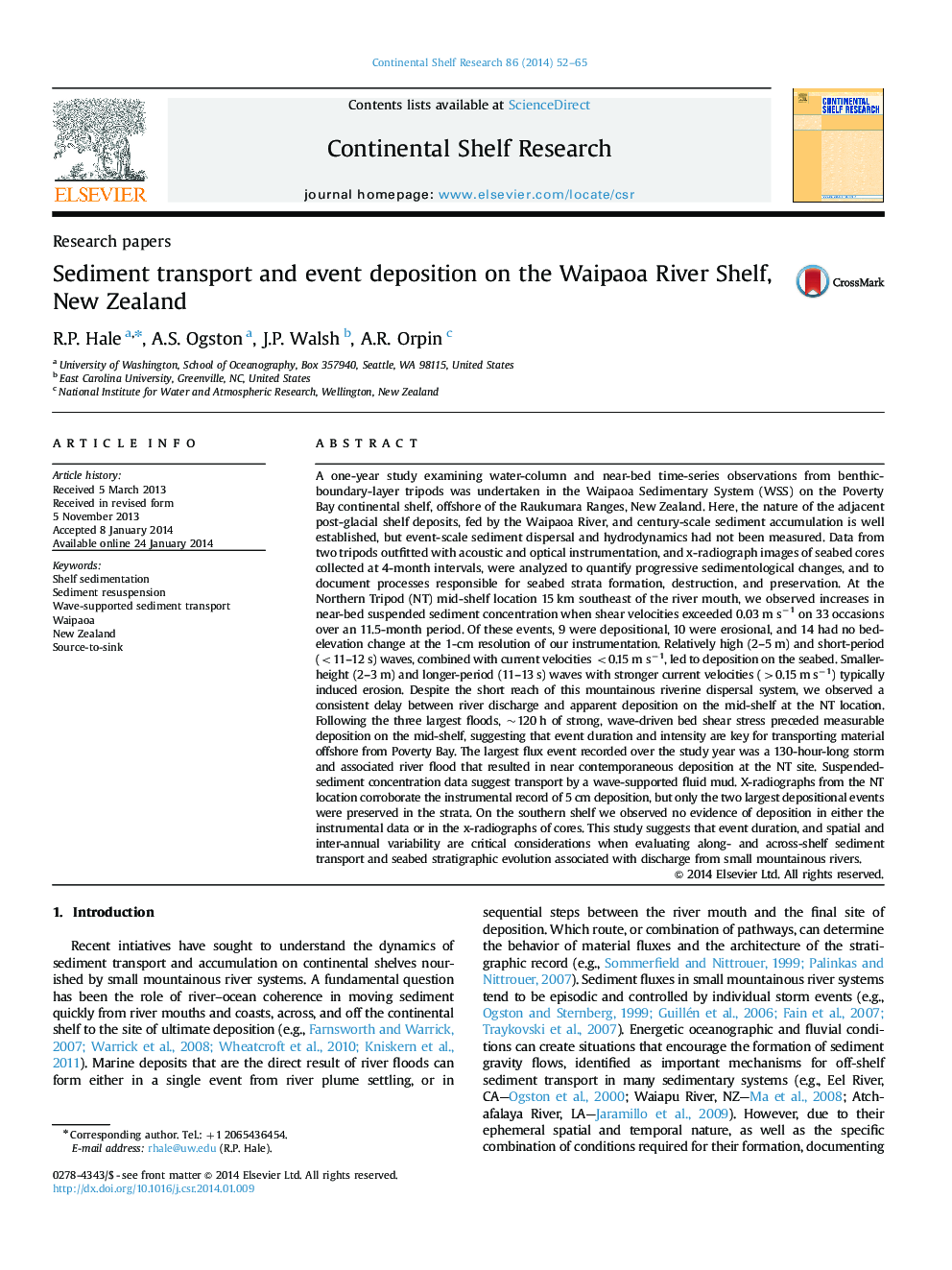| کد مقاله | کد نشریه | سال انتشار | مقاله انگلیسی | نسخه تمام متن |
|---|---|---|---|---|
| 4531847 | 1626126 | 2014 | 14 صفحه PDF | دانلود رایگان |

• We combine instrument and seabed data to examine shelf sedimentation.
• Combined dataset allows integration from hourly to seasonal scales.
• Waves dominate sediment resuspension on this continental shelf.
• Wave steepness appears to be an important factor for sediment resuspension.
• We observe a time lag between river discharge and mid-shelf seabed change.
A one-year study examining water-column and near-bed time-series observations from benthic-boundary-layer tripods was undertaken in the Waipaoa Sedimentary System (WSS) on the Poverty Bay continental shelf, offshore of the Raukumara Ranges, New Zealand. Here, the nature of the adjacent post-glacial shelf deposits, fed by the Waipaoa River, and century-scale sediment accumulation is well established, but event-scale sediment dispersal and hydrodynamics had not been measured. Data from two tripods outfitted with acoustic and optical instrumentation, and x-radiograph images of seabed cores collected at 4-month intervals, were analyzed to quantify progressive sedimentological changes, and to document processes responsible for seabed strata formation, destruction, and preservation. At the Northern Tripod (NT) mid-shelf location 15 km southeast of the river mouth, we observed increases in near-bed suspended sediment concentration when shear velocities exceeded 0.03 m s−1 on 33 occasions over an 11.5-month period. Of these events, 9 were depositional, 10 were erosional, and 14 had no bed-elevation change at the 1-cm resolution of our instrumentation. Relatively high (2–5 m) and short-period (<11–12 s) waves, combined with current velocities <0.15 m s−1, led to deposition on the seabed. Smaller-height (2–3 m) and longer-period (11–13 s) waves with stronger current velocities (>0.15 m s−1) typically induced erosion. Despite the short reach of this mountainous riverine dispersal system, we observed a consistent delay between river discharge and apparent deposition on the mid-shelf at the NT location. Following the three largest floods, ~120 h of strong, wave-driven bed shear stress preceded measurable deposition on the mid-shelf, suggesting that event duration and intensity are key for transporting material offshore from Poverty Bay. The largest flux event recorded over the study year was a 130-hour-long storm and associated river flood that resulted in near contemporaneous deposition at the NT site. Suspended-sediment concentration data suggest transport by a wave-supported fluid mud. X-radiographs from the NT location corroborate the instrumental record of 5 cm deposition, but only the two largest depositional events were preserved in the strata. On the southern shelf we observed no evidence of deposition in either the instrumental data or in the x-radiographs of cores. This study suggests that event duration, and spatial and inter-annual variability are critical considerations when evaluating along- and across-shelf sediment transport and seabed stratigraphic evolution associated with discharge from small mountainous rivers.
Journal: Continental Shelf Research - Volume 86, 1 September 2014, Pages 52–65